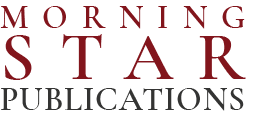Storytelling is a tried-and-true technique in advocacy campaigns, lobbying efforts, fundraising appeals, and other activist or social movements. Good stories told well capture our emotions and spur us to act or speak out. When combined with data and the larger context of a struggle or challenge, personal stories from the people directly affected by an issue are one of the most powerful tools that nonprofit organizations possess to create change.
The Hook PR & Marketing team created a guidebook with step-by-step, hands-on approach to creating powerful stories for advocacy with a focus on vulnerable populations. It incorporates ethical storytelling principles and a client-centered approach to strengthen the storyteller and the organization. You can download the entire guide at: marketing.hookpr.com/advocacy
Below are a few excerpts.
First principle
Social advocacy aims to leave a world better than it started. But when working with the stories of clients or others in vulnerable situations, advocates should follow grounding principles:
• Do no harm. Help storytellers understand what they are getting into.
• Put people first. Storytellers’ needs beat the advocacy mission’s needs.
• Center storytellers. Honor their voice, power and agency.
• Sharing their story is a privilege. Respect what they have given you.
The Framework
The “Self – Us – Now” model created by labor organizer and Harvard lecturer Marshall Ganz has proven extremely helpful for organizations building stories from the ground up. Known as “public narrative,” the approach is simple but adaptable to an endless number of story types. The three touchstones of self, us and now are interconnected and together create a structure upon which your advocacy stories can rest.
Self: The stories shared will help others understand the problem and solution. Focus on the primary choices that were and are made.
Now: The primary challenge or problem being faced, and the actions needed to solve it.
Us: The story’s appeal to the audience through shared values and experiences.
Concerns & Benefits
Be alert for harm to the storyteller. When people share a painful or troubling time, they make themselves vulnerable again. The act of recounting their struggle and story may re-traumatize them, leading to feelings of shame, embarrassment or lack of control. If the storyteller is a client, they may feel implicitly pressured to participate or expect special treatment if they do. People who have left their old situation may fear they will cause disappointment if problems reoccur. And if stories are shared widely, the person could be reduced to the worst time in their life. Storytellers must go into advocacy projects with their eyes wide open and with support from your organization’s experts. Recognize that stories can benefit the storyteller. Telling a personal story can help someone recognize that they have control of their narrative. It may help the teller develop a stronger sense of confidence by finding their personal voice. Storytelling can also be an altruistic and activist act of giving – realizing that their experience can help someone else in similar situations by inspiring others to action and solutions. The act of sorting through events, especially with the assistance of a skilled interviewer, can make sense of someone’s life experiences.
Download the entire guidebook at marketing.hookpr.com/advocacy.
About the author
Hook PR & Marketing works with nonprofit organizations to tell their stories and craft their messages. Do you want to learn more about storytelling and effective ways to craft your nonprofit’s annual report? Download our free guidebook: hookpr.com/annual-report

